The technique of quilling, dating back to the seventeenth century, is a decorative art primarily used to ornament reliquaries. The technique uses strips of paper with gold or colored edges, turned on the side and wrapped in such a way as to form arabesques around the relic.
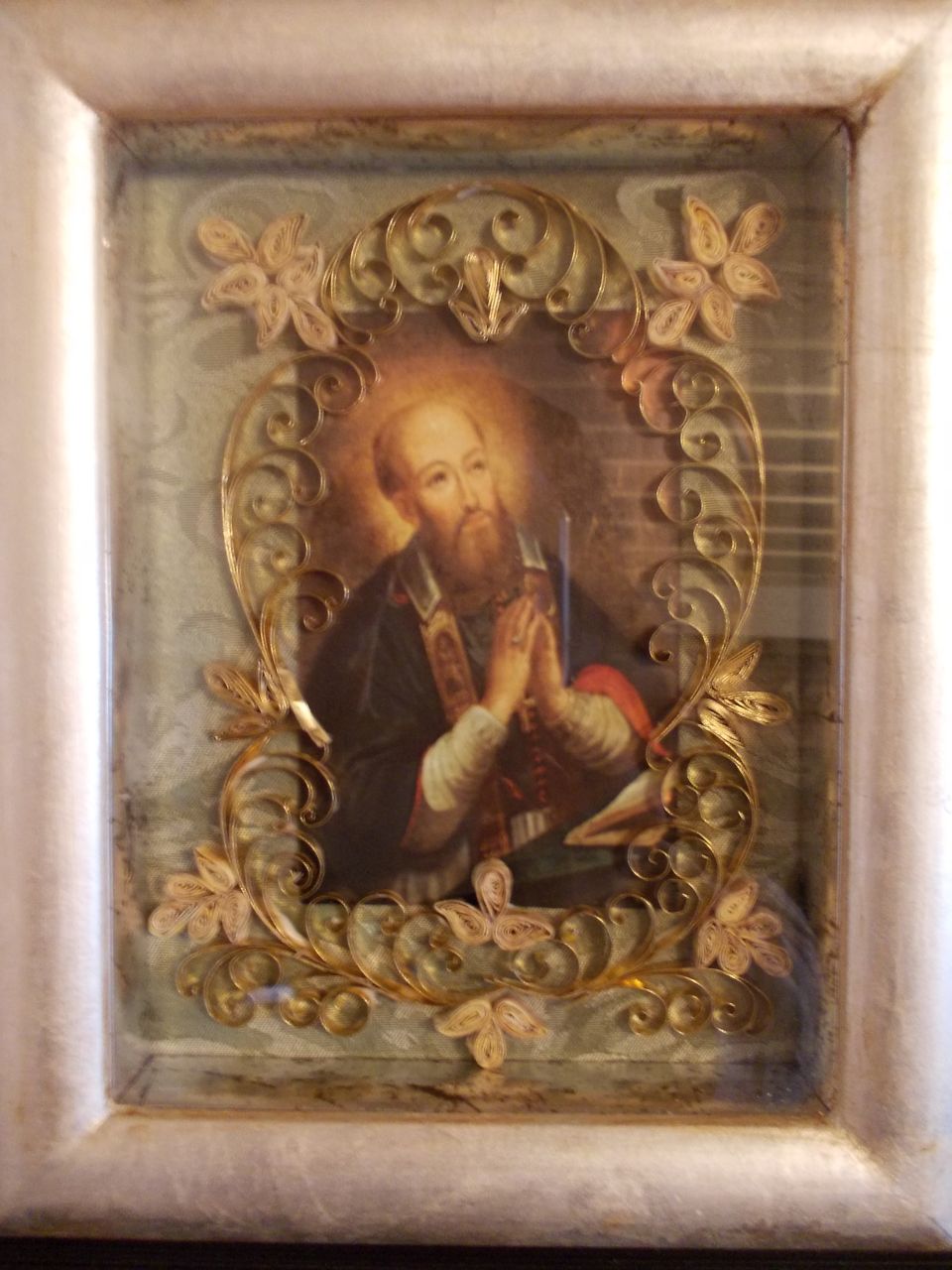 |
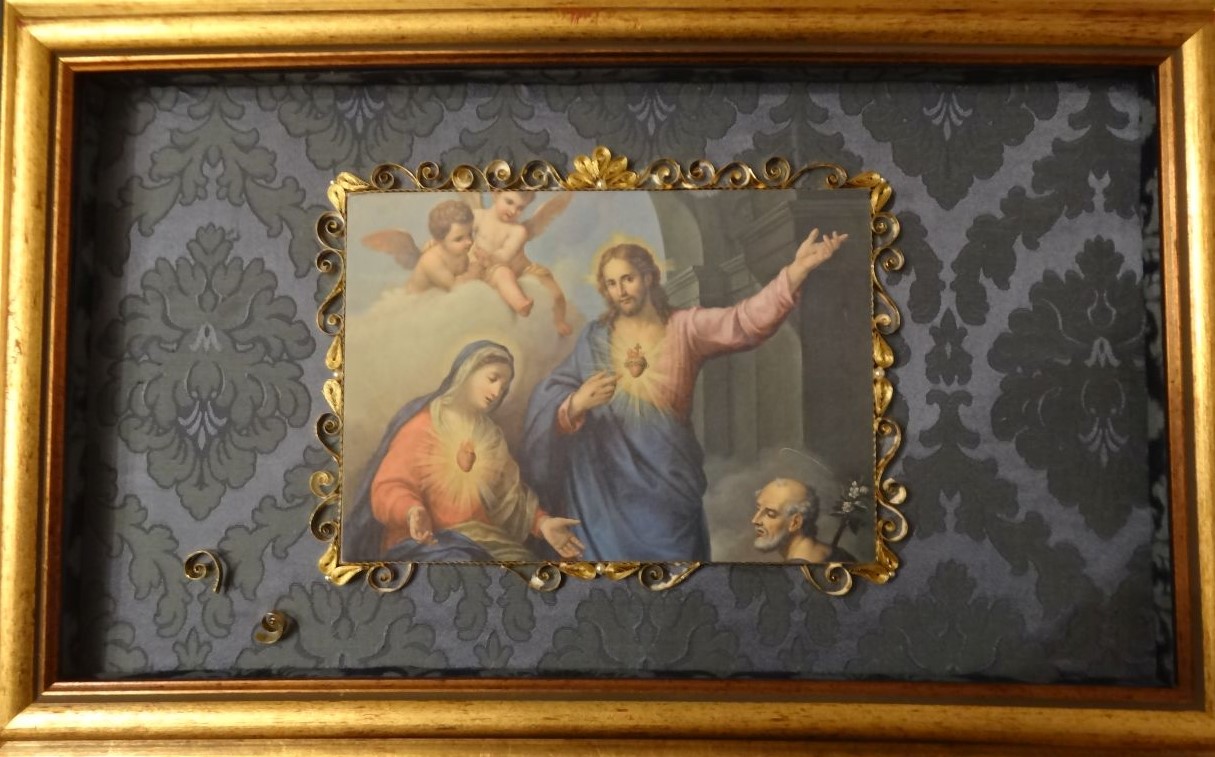 |
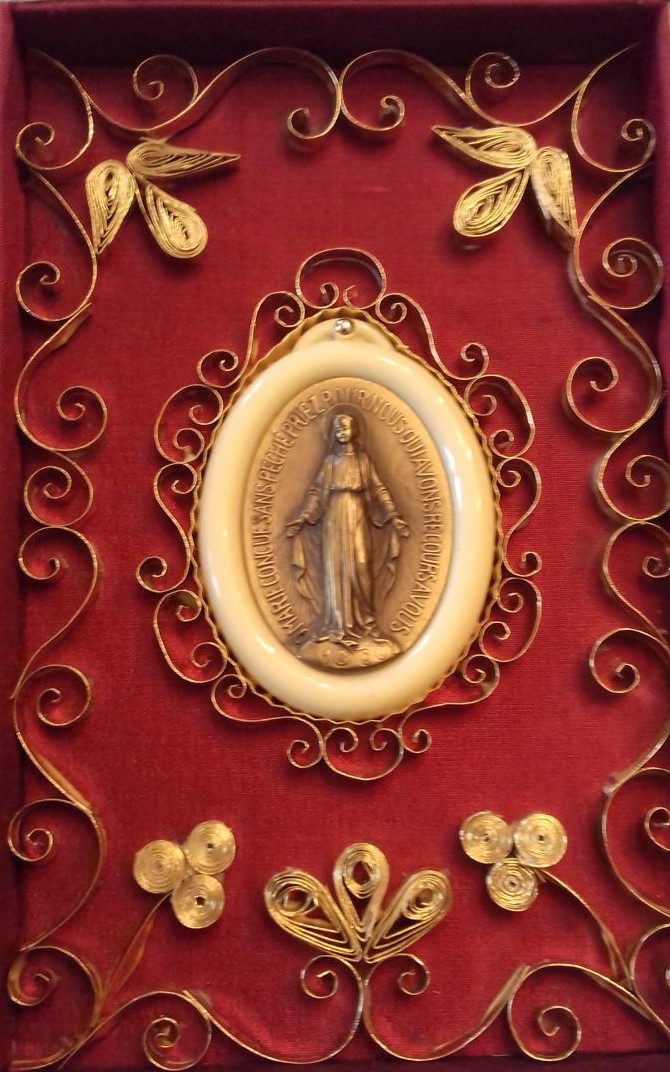 |
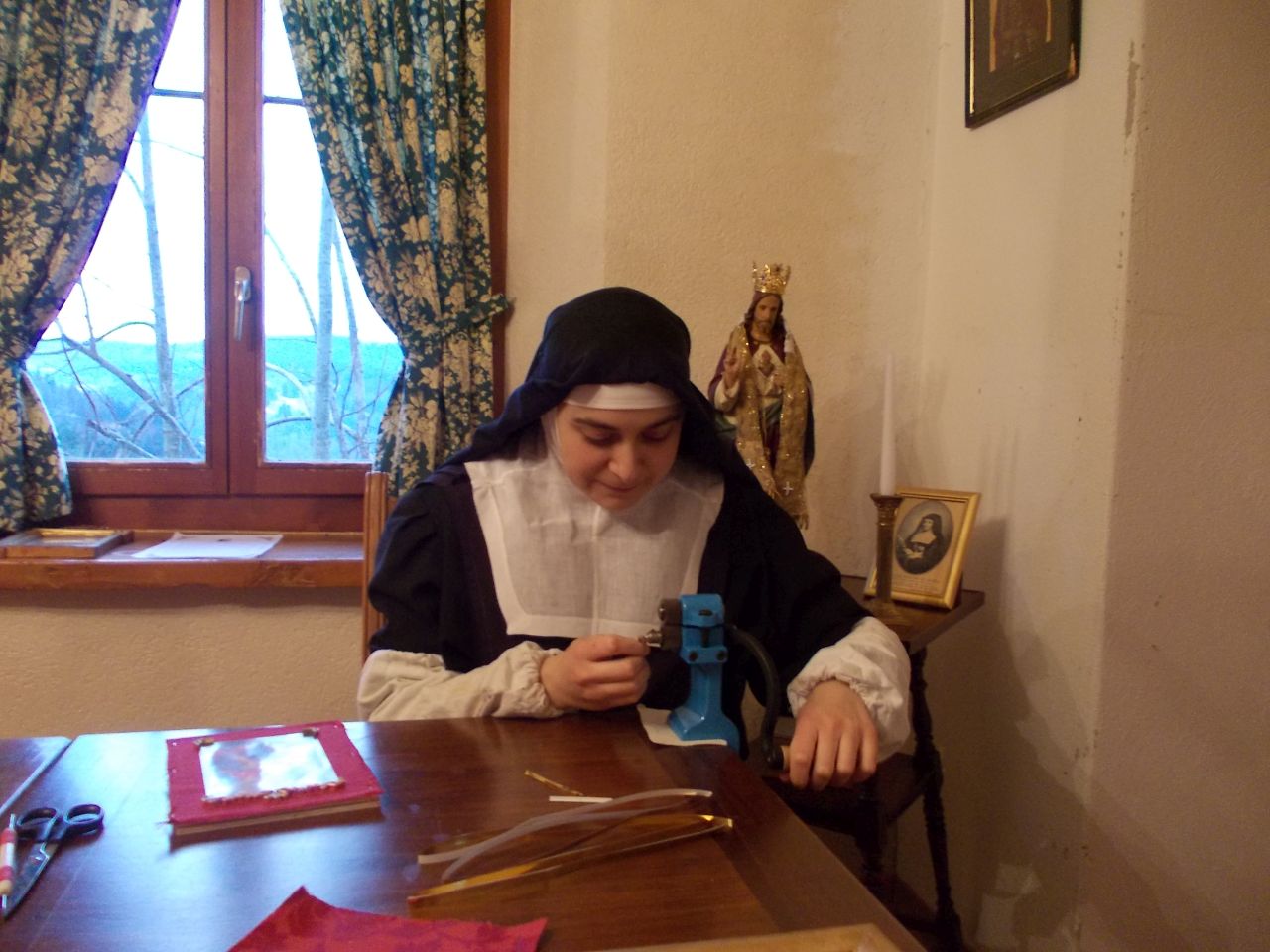
Quilling developed in religious art during the Middle Ages. The aim was to imitate delicate ironwork and silverwork, lace and embroidery. Indeed, from thin strips of paper that were colored, gilded, rolled, curled, bowed, twisted and folded, the paper strips imitate the latticework decorations of gold and silver that were too expensive for convents and parishes. The works were carried out by Carmelites, Ursulines, and Visitation nuns, who used this technique to surround and adorn reliquaries for the honor of the saints, but also for statuettes or pious images.
This mode of art, which was developed in the 17th century, has been taken up by the Sisters Adorers: it is one of the material ways, among many others, to respond to their vocation to bring the adoration of God to the world around hem.
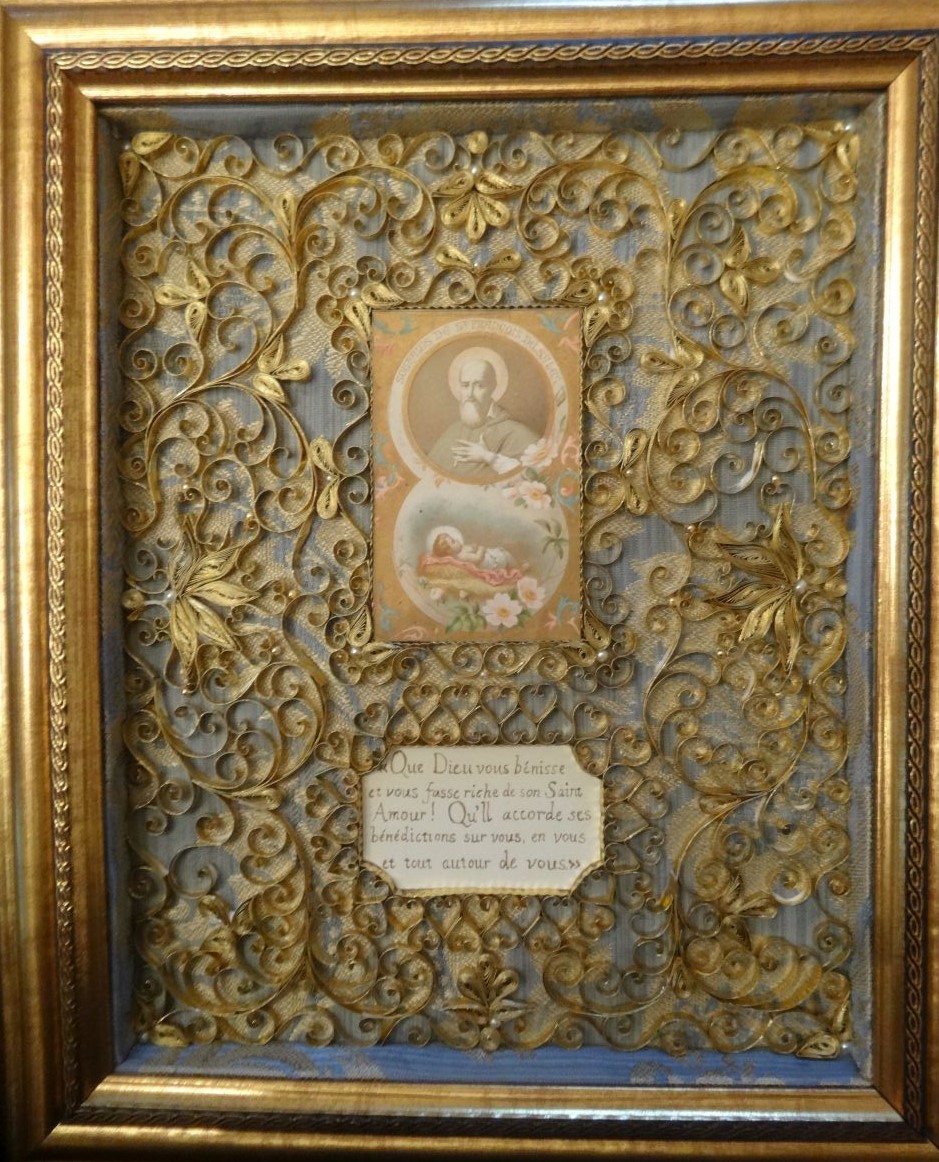 |
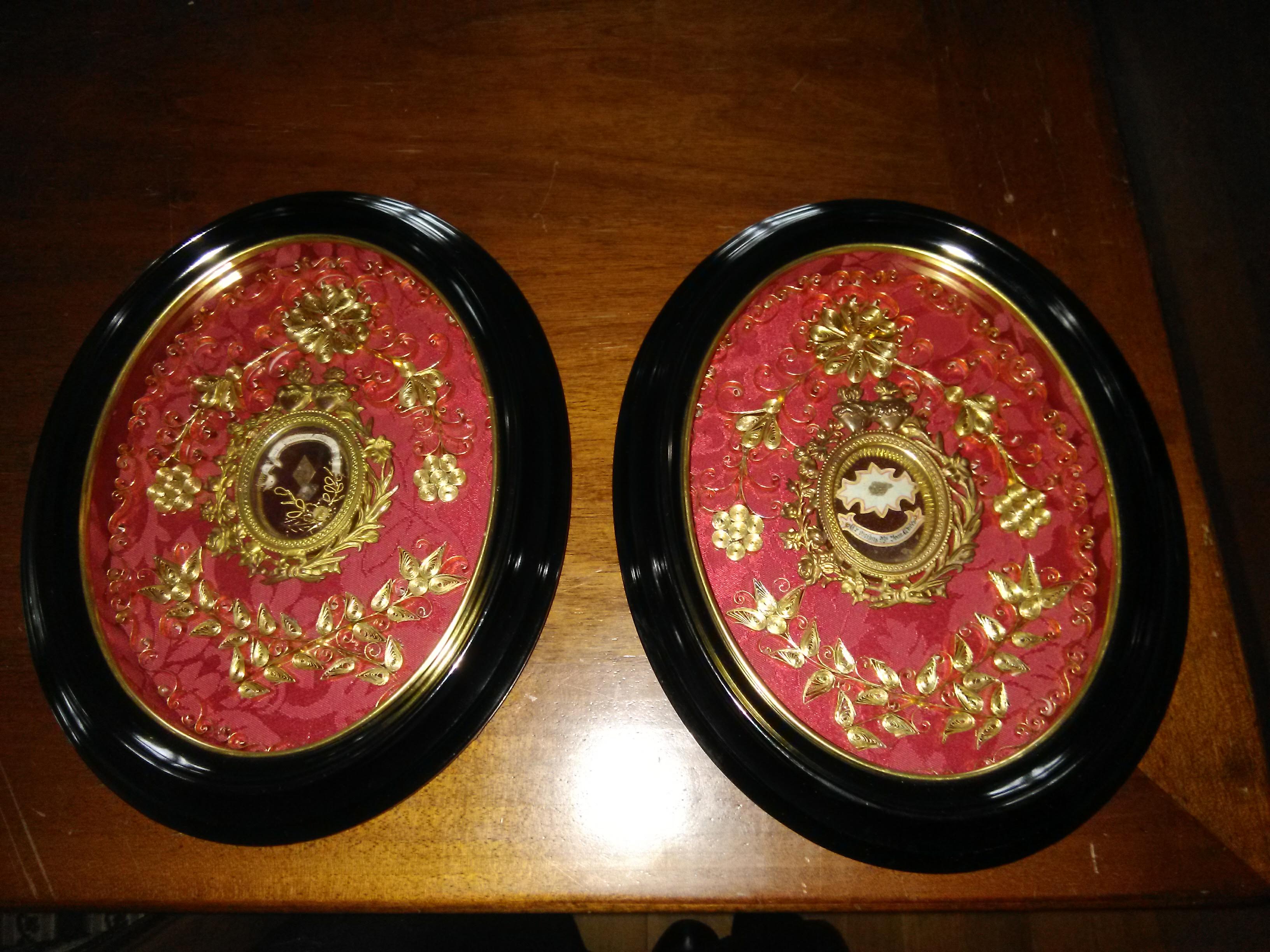 |
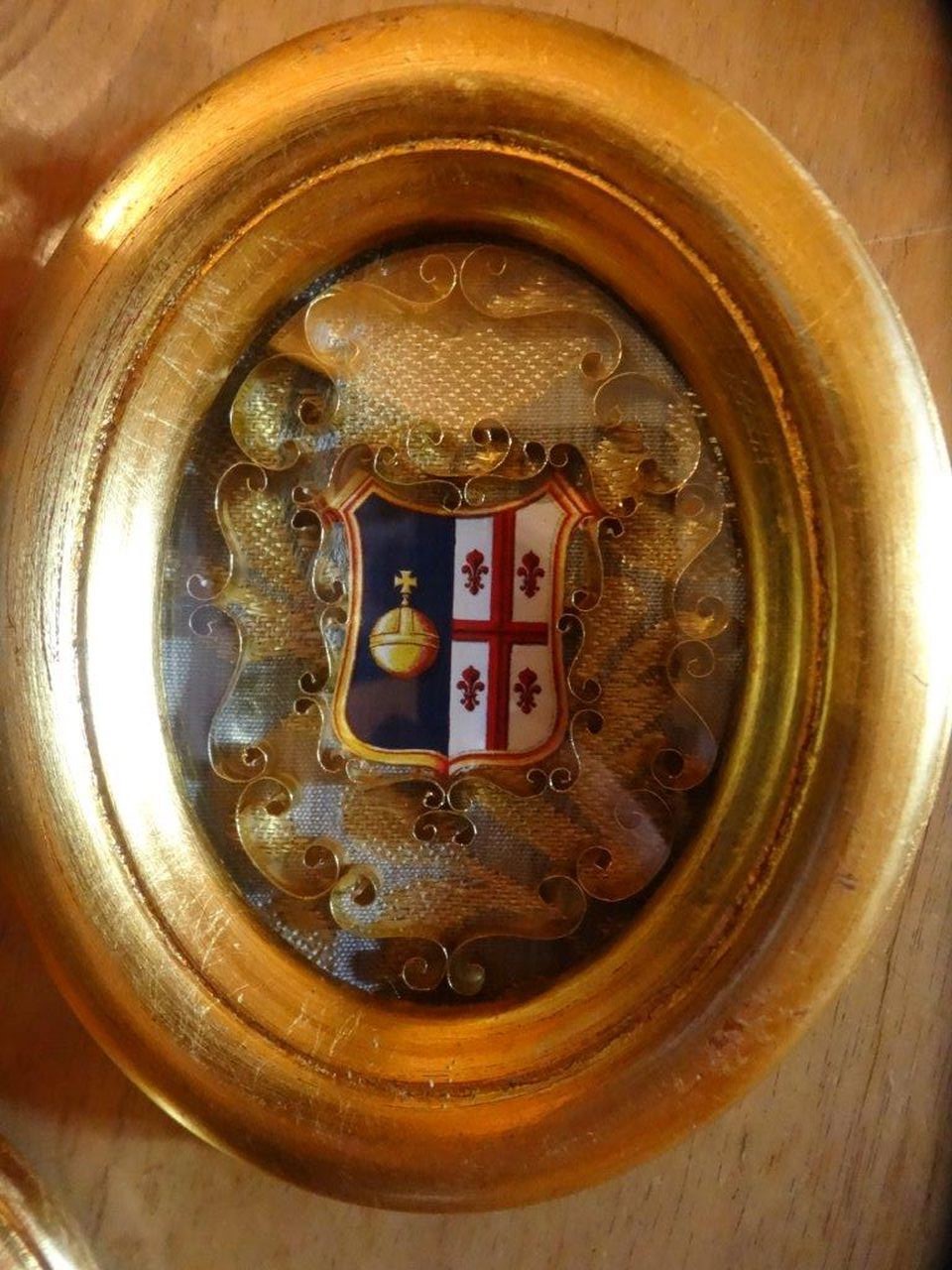 |





